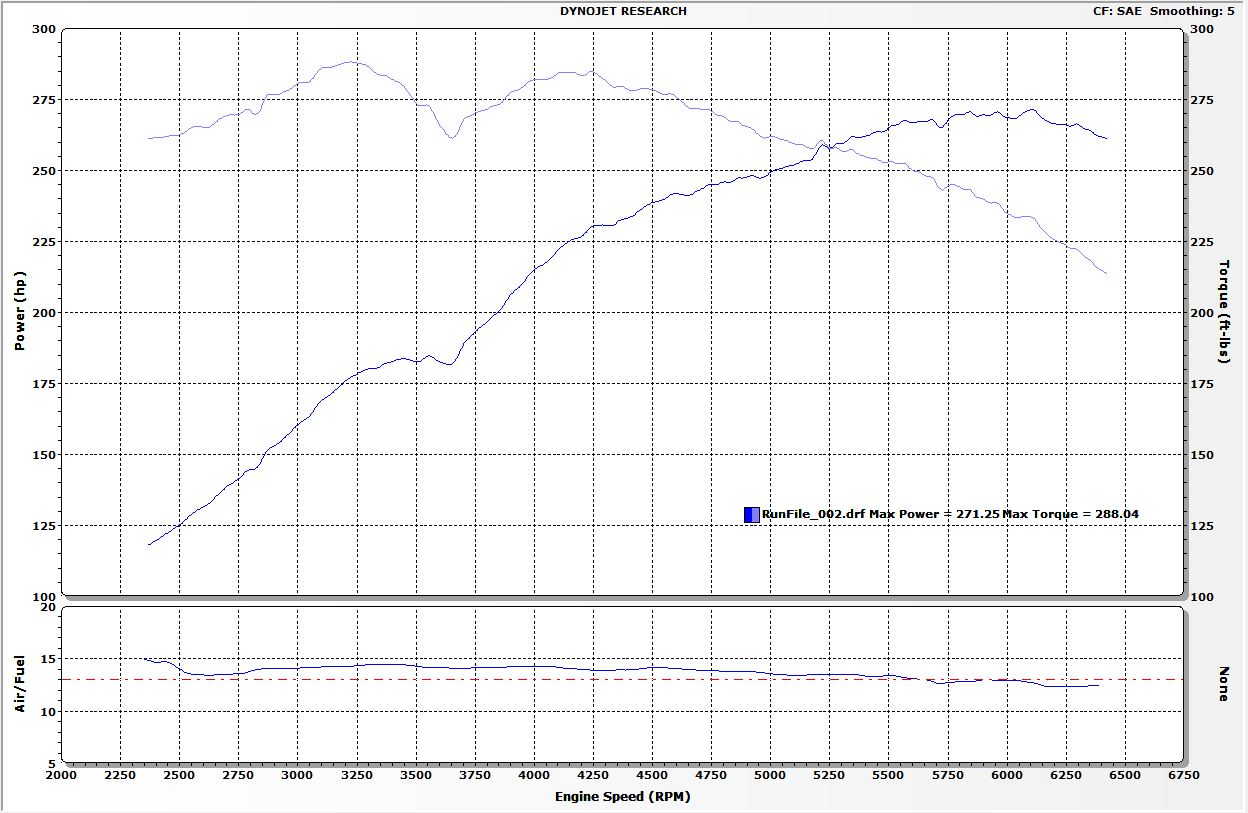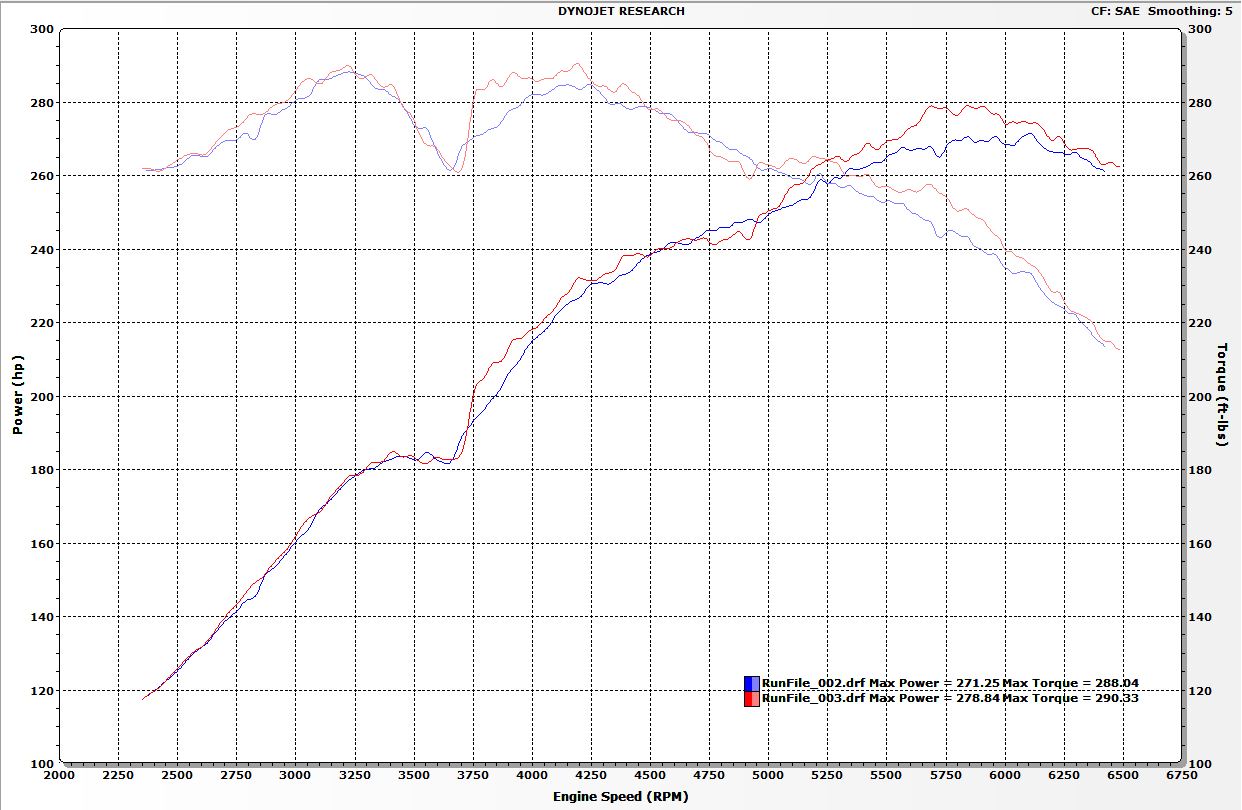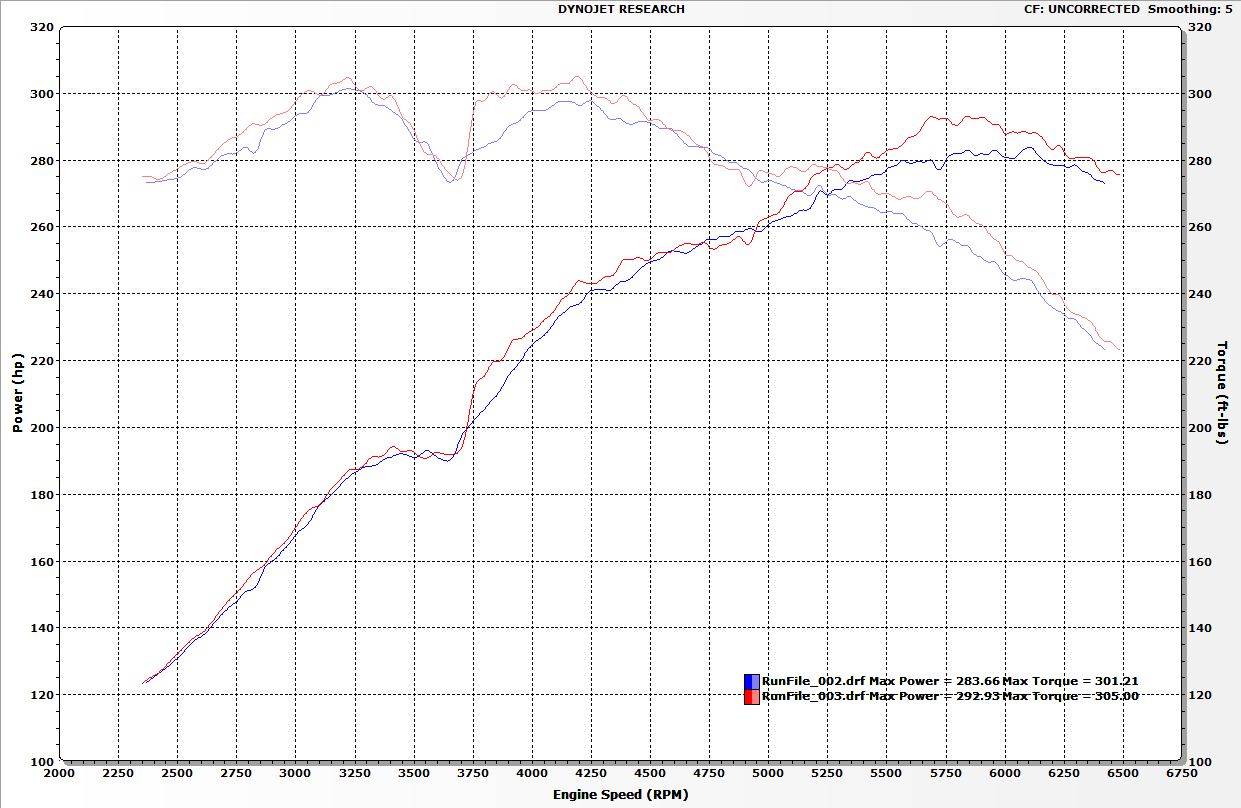'88 5-speed dyno log
#1
The first of likely many trips to the dyno. 
'88 5-speed 44K miles, stock:
- cats
- LH, EZ
- airpump
- cam timing
- rear muffler
- 19# injectors
- small resonators
- air filter housing/tubes
New or tested/working:
- flappy
- air filter
- cam sensor
- WOT switch
Updates:
- PKT
- rebuilt MAF
- 18" Cayman rims
- Gates Racing belt
- Ostrich 2.0 EPROM emulators
- NGK BP7ES 1.0mm gap (colder, non-resistor)
89 octane (Chevron)
SAE

Blue line is stock '88 EZ and LH.
Red line is preliminary S4.S300s EZ only.
(RPM rescale, few degrees advance here and there, WOT bypass)
SAE


'88 5-speed 44K miles, stock:
- cats
- LH, EZ
- airpump
- cam timing
- rear muffler
- 19# injectors
- small resonators
- air filter housing/tubes
New or tested/working:
- flappy
- air filter
- cam sensor
- WOT switch
Updates:
- PKT
- rebuilt MAF
- 18" Cayman rims
- Gates Racing belt
- Ostrich 2.0 EPROM emulators
- NGK BP7ES 1.0mm gap (colder, non-resistor)
89 octane (Chevron)
SAE

Blue line is stock '88 EZ and LH.
Red line is preliminary S4.S300s EZ only.
(RPM rescale, few degrees advance here and there, WOT bypass)
SAE

Last edited by PorKen; 02-14-2013 at 06:28 PM.
#5
And so it starts 
You picked up 12-ishhp between the charts in posts 1 and 2 - what else changed?
Your first post says the red line in it is the prelim EZ-K chip.. what're the changes between that and the red line in the second chart?
I'm wondering whether your rescale of the map rpm divisions still works with the ST? Happy to load binaries into my ST on the '87 if its any help (ST/WBO2 is currently installed in that car and will be for the next couple of months probably).
I need to figure out if I can get reasonable welds on stainless using Argon/CO2/O2 mix - so I can remove and re-angle the O2 bung on my ex-UK Ritech x-pipe (it interferes with the bell housing - so I currently have stock cats on there). I'd rather not buy new gas for about 10cm of weld.

You picked up 12-ishhp between the charts in posts 1 and 2 - what else changed?
Your first post says the red line in it is the prelim EZ-K chip.. what're the changes between that and the red line in the second chart?
I'm wondering whether your rescale of the map rpm divisions still works with the ST? Happy to load binaries into my ST on the '87 if its any help (ST/WBO2 is currently installed in that car and will be for the next couple of months probably).
I need to figure out if I can get reasonable welds on stainless using Argon/CO2/O2 mix - so I can remove and re-angle the O2 bung on my ex-UK Ritech x-pipe (it interferes with the bell housing - so I currently have stock cats on there). I'd rather not buy new gas for about 10cm of weld.
#6
So are these chips primarily intended for people either: without a Sharktuner (can't afford or can't for some other reason), or don't know enough about tuning EFI to make the same improvements themself?
#7

SAE vs. UNCorrected, IE. what it's putting down at the wheels in the weather I have here, currently.
I had to play with the feed and temp, but it worked fine.
Because of the thin material, I did all the welds as a succession of individual spot welds.
Also, I have developed new ways of tuning areas that you can't 'reach' with a ST.
Also, custom programming to do new things, like No-Lift-Shifting.
Most 928s are set up the same way, so one chipset can cover quite a range.
I'm tuning using 24# injectors, as the stock 19's are borderline for max performance.
Trending Topics
#9
Hopefully, by the time the tow eye party date is set, I'll have something more worthy. 
I just made an edumacated guess to get the red line improvement at 3800 and 5600.
No knock logging, or logging of any kind, FTM.
I'm happy it showed some improvement, though!
The X-pipe and more fuel should easily push it over 300.
I just hope I can make more power in the valleys, and below 3000, eventually.

I just made an edumacated guess to get the red line improvement at 3800 and 5600.
No knock logging, or logging of any kind, FTM.
I'm happy it showed some improvement, though!
The X-pipe and more fuel should easily push it over 300.
I just hope I can make more power in the valleys, and below 3000, eventually.
#11
There is no "standard" engine. There are different choices for "go faster" parts, the factory varied the engine configurations (early vs. late S4's have different compression ratios, for example), and production tolerances and aging are the wild-cards-- especially MAF's.
That's not to say that a "one-size-fits-all" chip set won't find some added performance, it will. The opportunity is that the factory usually leaves some horsepower "tying on the table" by deliberately using a conservative tune. The primary reason they do that is for safety, so that component aging or production tolerances don't put the engine at risk for detonation damage.
Any one-size chip has the same issues, but if you know that the MAF is calibrated, the fuel pressure is correct, and if you know that the engine configuration is the same as the chip was tuned for, then there is some power to be had.
But in every case, if you spend the time to tune your engine (or have it done for you) for your particular engine then you will get more. How much depends on what you start with, and how hard you work at it. Tuning does require knowledge of how engines work, and learning how to use the tools, but for lots of folks that is a big part of the fun. And it's only a PITA if you don't have a Sharktuner.
This is Ken's thread and he is working on chips, my only point is that a chip set and a Sharktuner two different things. Both are useful depending on what your goals are. We can talk about Sharktuners elsewhere, if you want.
Cheers, Jim
#12
I don't see one chipset covering S4-GTS, certainly.
I am working on a version for '87-early '88 manuals...cuz I have one.
I will hopefully use this as a basis for an auto version (can't make a generic chip starting with an auto).
Autos and manuals need a slightly different tune.
Most models in the same range of years will have at most a X-pipe.
My goal is an overall increase in response, and I want to use 24# injectors for more headroom at WOT.
Even on the same car, you can't tune too finely, because next month, when the weather changes (if you have seasons where you live), you'll have to do it again. Much of what you might do at part throttle will be countermanded by the O2 sensor loop (and adaptation), anyway. WOT tuning is important to maintain a threshold for knock tolerance, but AFR by itself doesn't make a huge difference in peak numbers.
That said, there will still be plenty of work for SharkTuners, for other years, and for folks with aftermarket cams, etc.
I am working on a version for '87-early '88 manuals...cuz I have one.

I will hopefully use this as a basis for an auto version (can't make a generic chip starting with an auto).
Autos and manuals need a slightly different tune.
Most models in the same range of years will have at most a X-pipe.
My goal is an overall increase in response, and I want to use 24# injectors for more headroom at WOT.
Even on the same car, you can't tune too finely, because next month, when the weather changes (if you have seasons where you live), you'll have to do it again. Much of what you might do at part throttle will be countermanded by the O2 sensor loop (and adaptation), anyway. WOT tuning is important to maintain a threshold for knock tolerance, but AFR by itself doesn't make a huge difference in peak numbers.
That said, there will still be plenty of work for SharkTuners, for other years, and for folks with aftermarket cams, etc.

#13
Jcorenmann thank you for a bit of insight. I do realize that every motor is different, and that is why you will always get more power when tuning your own car. I really am interested in tuning EFI systems, i was actually considering going to a place called EFI University or something like that where they have a good 3 or 4 day course where they cover the basics, and work their way up to dyno tuning.
I really like that there's so many variables for tuning any engine really, and it's cool to learn about how the factory did all these minute things to improve airflow or ram more air at low RPM etc.
I really like that there's so many variables for tuning any engine really, and it's cool to learn about how the factory did all these minute things to improve airflow or ram more air at low RPM etc.




